How to Determine the Amps for 5000 Watts at 240 Volts
When working with electrical systems, one of the most common calculations you'll need to perform is converting watts into amps. In this article, we’ll explore how to determine the amps for 5000 watts at 240 volts, a crucial process for anyone working with electrical equipment or systems. Understanding this conversion can help you safely operate electrical devices and ensure your setup is suitable for the power needs of your equipment.
- What Are Amps and Watts?
- The Relationship Between Watts, Volts, and Amps
- How to Calculate Amps for 5000 Watts at 240 Volts
- Why Is Knowing Amps Important?
- How to Ensure Your Circuit Can Handle the Amps
- Understanding Amps in Different Scenarios
- Common Misconceptions About Amps and Watts
What Are Amps and Watts?
Before we dive into the formula for calculating amps, it's important to understand the basic electrical units involved: amps and watts.
- Amps (or amperes) measure the flow of electric current in a circuit. They essentially represent how much electricity is flowing.
- Watts measure the amount of electrical power used or produced by a device. This is the rate at which energy is consumed or generated.
The Relationship Between Watts, Volts, and Amps
To calculate amps from watts, we need to understand the relationship between watts, volts, and amps. This relationship is encapsulated in the formula:
Amps=WattsVoltsAmps = \frac{Watts}{Volts}
This formula is derived from Ohm’s law and allows us to calculate the current (amps) when we know the power (watts) and the voltage (volts).
>>See also What You Need To Know About 18650 And 14500 Batteries
How to Calculate Amps for 5000 Watts at 240 Volts
Let’s break down how to calculate the amps for 5000 watts at 240 volts using the formula above. Given:
- Power (Watts) = 5000 watts
- Voltage (Volts) = 240 volts
We plug these values into the formula:
Amps=5000240=20.83 AmpsAmps = \frac{5000}{240} = 20.83 \, Amps
So, a device consuming 5000 watts of power at 240 volts requires approximately 20.83 amps.
Why Is Knowing Amps Important?
Understanding amps is critical for several reasons. Here are a few key points why it’s important to calculate the amps when dealing with electrical equipment:
1. Avoiding Overload
Knowing the required amps helps you ensure that your circuit can safely handle the load. If you connect too many devices that draw excessive current, you could overload the circuit, leading to potential safety hazards such as fires or short circuits.
2. Sizing the Correct Circuit
Every electrical system has a limit on how much current it can handle. By determining the number of amps your devices require, you can select the correct wiring and circuit breakers to handle that load.
3. Understanding Power Usage
When you know how many amps a device uses, you can also estimate how much electricity it consumes over time. This helps you calculate electricity bills and optimize energy usage, which is especially important for businesses or anyone trying to reduce their energy costs.
How to Ensure Your Circuit Can Handle the Amps
Once you've calculated the amps for your system, the next step is to ensure that your wiring and circuit breakers are up to the task. Here’s how to do that:
Choose the Right Gauge Wire
Different gauges of wire are designed to carry specific amounts of current safely. The larger the wire, the more amps it can carry without overheating. Make sure to select a wire gauge that is rated for the amps your system requires.
Use the Proper Circuit Breaker
Circuit breakers protect your electrical system by shutting off the power when the current exceeds a safe limit. Choose a breaker rated for the maximum amperage you calculated. For example, if your system needs 20.83 amps, you might select a 25-amp breaker to provide a safety margin.
Check Voltage Drop
If your system has a long wire run from the power source, you may experience a voltage drop, which reduces the amount of voltage available at the device. This can affect the performance of your equipment. Consider using a thicker wire for long runs or installing a voltage regulator to ensure your equipment receives the proper voltage.
Understanding Amps in Different Scenarios
In various electrical systems, the amps required may differ based on factors such as the voltage, the type of equipment, and whether the system is AC or DC. Let’s take a closer look at how amps are affected by these variables.
Amps in AC vs DC Circuits
The calculation for amps in AC (alternating current) and DC (direct current) systems may differ slightly due to the nature of the current flow. In most residential and industrial settings, AC is used. The formula to calculate amps is generally the same, but for DC systems, the power factor (which accounts for phase differences in AC systems) needs to be considered.
Amps for Large Appliances
For large appliances, like HVAC units or industrial equipment, the power rating (in watts) is often much higher, and the voltage might vary as well. It’s important to calculate the required amps based on the specific power requirements of each appliance.
>>See also How Long Will A 100Ah Lithium Battery Power A Refrigerator
Common Misconceptions About Amps and Watts
There are several misconceptions about amps and watts that can lead to confusion when calculating power requirements. Let’s clear up a few:
1. More Watts Mean More Amps:
While it's true that higher wattage requires more amps, the relationship between watts, amps, and volts means that for the same wattage, increasing the voltage decreases the number of amps required. For example, a 5000-watt appliance at 240 volts uses fewer amps than the same appliance at 120 volts.
2. Voltage Does Not Always Equal Amps:
Some people assume that higher voltage always means higher current. However, voltage and current work together, and one can be increased or decreased to maintain the same power output.
3. Watts Directly Translate to Power Consumption:
While watts measure electrical power, they do not directly indicate how much energy a device consumes over time. The energy consumption is measured in kilowatt-hours (kWh), which takes into account the duration of use.
In conclusion, determining the amps for a given wattage and voltage is a crucial skill for anyone working with electrical systems. In this case, we calculated that a 5000-watt load at 240 volts requires approximately 20.83 amps. Knowing how to perform these calculations ensures that you can size your electrical systems appropriately, avoid overloading circuits, and ensure the safe operation of your equipment.
Always ensure that you use the correct wiring and circuit protection for your needs, and if in doubt, consult with a professional electrician. Understanding how to calculate amps is essential not only for safety but also for efficiency and optimal energy management in electrical systems.
By accurately calculating amps from watts at 240 volts, you can ensure your electrical setup is capable of handling the required load, keeping your equipment running smoothly and safely. This knowledge is key to designing effective electrical systems and optimizing energy consumption in both residential and commercial settings.

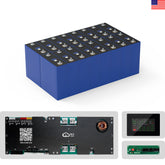



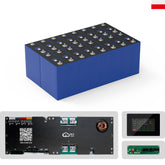



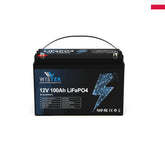




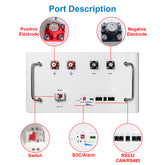
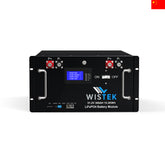
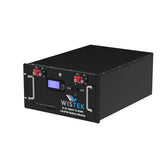


Leave a comment
All blog comments are checked prior to publishing